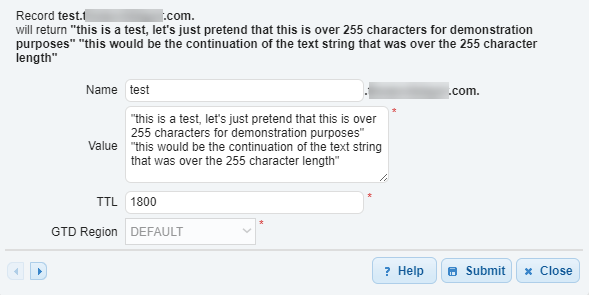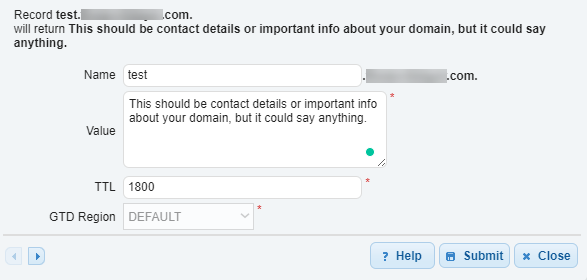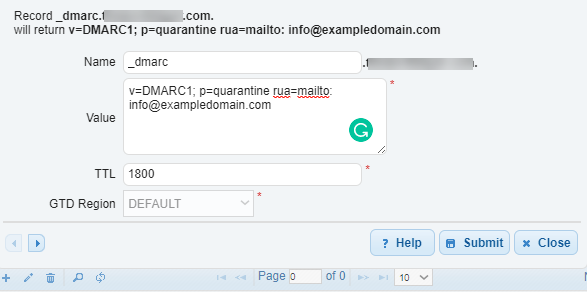Whether you’re setting up email authentication, verifying domain ownership, or adding important metadata to your DNS zone, TXT records play a vital role. In this post, we’ll break down what TXT records are, how they work, and why they matter—along with real-world examples to help you configure them correctly. From basic text entries to critical security policies like SPF, DKIM, and DMARC, you’ll learn how to manage TXT records confidently with DNS Made Easy.
DNS TXT Records
TXT records are multi-purpose records. While most DNS records contain data only for machines, this record type can also include human-readable instructions. TXT records are commonly used to store contact details and general information about a domain. But they are also used for a “higher” purpose, such as email spam prevention, domain ownership verification, and framework (SPF) policies.
The TXT record was first introduced as an experimental record format in 1993. There are no specific formatting requirements for basic TXT records, but there are some restrictions. These records aren’t meant for large bytes of data. If the text value is longer than 255 characters, you’ll need to split the value into separate parts. Each section over 255 characters must be enclosed in double quotes (see example below).
TXT Record Examples
Here’s a visual example of separating values over the 255-character limit for a TXT record in DNS Made Easy:

Name of record Record type Value TTL
Test TXT “example…example text” “example…example text” 1800

If you’re under the 255-character limit, this is what a basic TXT DNS record would look like:
Name of record Record type Value TTL
Test TXT Your text goes here 1800

How TXT Records Help Prevent Email Spam
There are several ways a TXT record acts as an email authenticator. When configured for this purpose, text records can establish that an email is coming from a trusted source. This is because it would include all servers authorized to send messages on behalf of a domain. TXT records can also hold public key information and store different policies, such as DMARC and framework policies.
DKIM Records
A DomainKeys Identified Mail (DKIM) record is a modified TXT record. This type of TXT record hosts public keys attached to specific domains. These keys sign emails digitally. DKIM records also act as a security measure by ensuring emails aren’t tampered with during the delivery process.
DMARC Records
Domain-based Message Authentication, Reporting, and Conformance (DMARC) records are another type of modified DNS TXT record. These records instruct servers on how to handle a message. For instance, you could specify a rule to either quarantine, reject, or allow delivery of a message. DMARC records can also be configured to send reports of actions taken by email servers.
Here’s an example of how creating a DMARC record would look like in DNS Made Easy:

Domain ownership verification
You can also prove you control your domain with text records. In most cases, you’ll need the verification code from your domain registrar and admin access to the DNS zone of the domain. This type of TXT record configuration allows providers to query your server and verify ownership. Another way to verify ownership is by adding a TXT file with a verification string to the root directory of your web server.
Let’s take a look at how this would look in a record (verification string used here is just an example).

Name: blank or @ (depends on provider)
Record Type: TXT
Value: example-site-verification=85Kh11mr3Lj9vPT4CRW6187op5NdRiYq7TuWzBRYQh
TTL: 1800

TXT Record vs SPF Record
The Internet Engineering Task Force (IETF) deprecated SPF records in 2014. Framework policies should now be configured as TXT records. These policies verify which IP addresses or hosts can send mail to a domain. Continuing to use SPF records can cause unexpected issues. If your domain is still using an SPF record, it’s recommended to have a TXT record with identical information, even if your provider still supports SPF.
Tip: DNS Made Easy still supports modifications of existing SPF records in your account, but new configurations must be in TXT record format.
TXT Record Lookup
To test or verify your TXT records, you can use a command line utility on Windows, Mac, or Linux. You can also perform a TXT record lookup with an online resource like our DNS Lookup Tool. Each of these methods lets you check if changes have propagated. DNS lookups can also verify that records are being returned properly.
TXT Record Summary
And there you have it! The TL;DR of TXT records is that they can include human and machine-readable information. This includes contact details for the domain’s administrator or other pertinent information. TXT record configurations can also be framework policies and domain ownership verifications. They can also be set up as DMARC and DKIM records to prevent email spam and spoofing. If your text value is longer than 255 characters, you’ll need to split the values using double quotes
Simplify TXT Record Management with DNS Made Easy
TXT records do a lot of heavy lifting—from verifying domain ownership to enforcing email security policies like SPF, DKIM, and DMARC. DNS Made Easy gives you the tools to manage TXT records with ease, ensuring accurate formatting, fast updates, and seamless integration with your DNS strategy. Whether you’re securing your domain or authenticating your emails, DNS Made Easy makes complex TXT record configurations simple and reliable.
